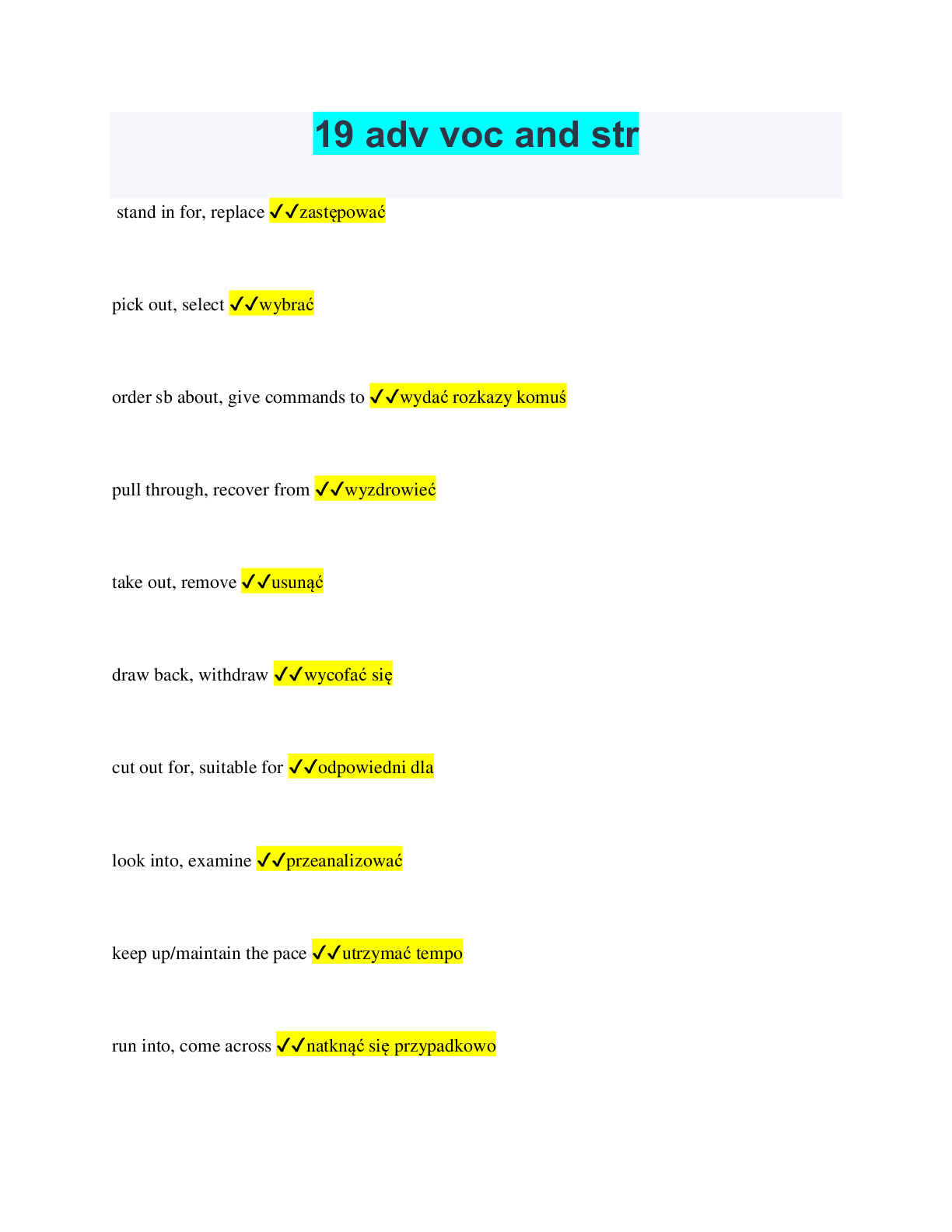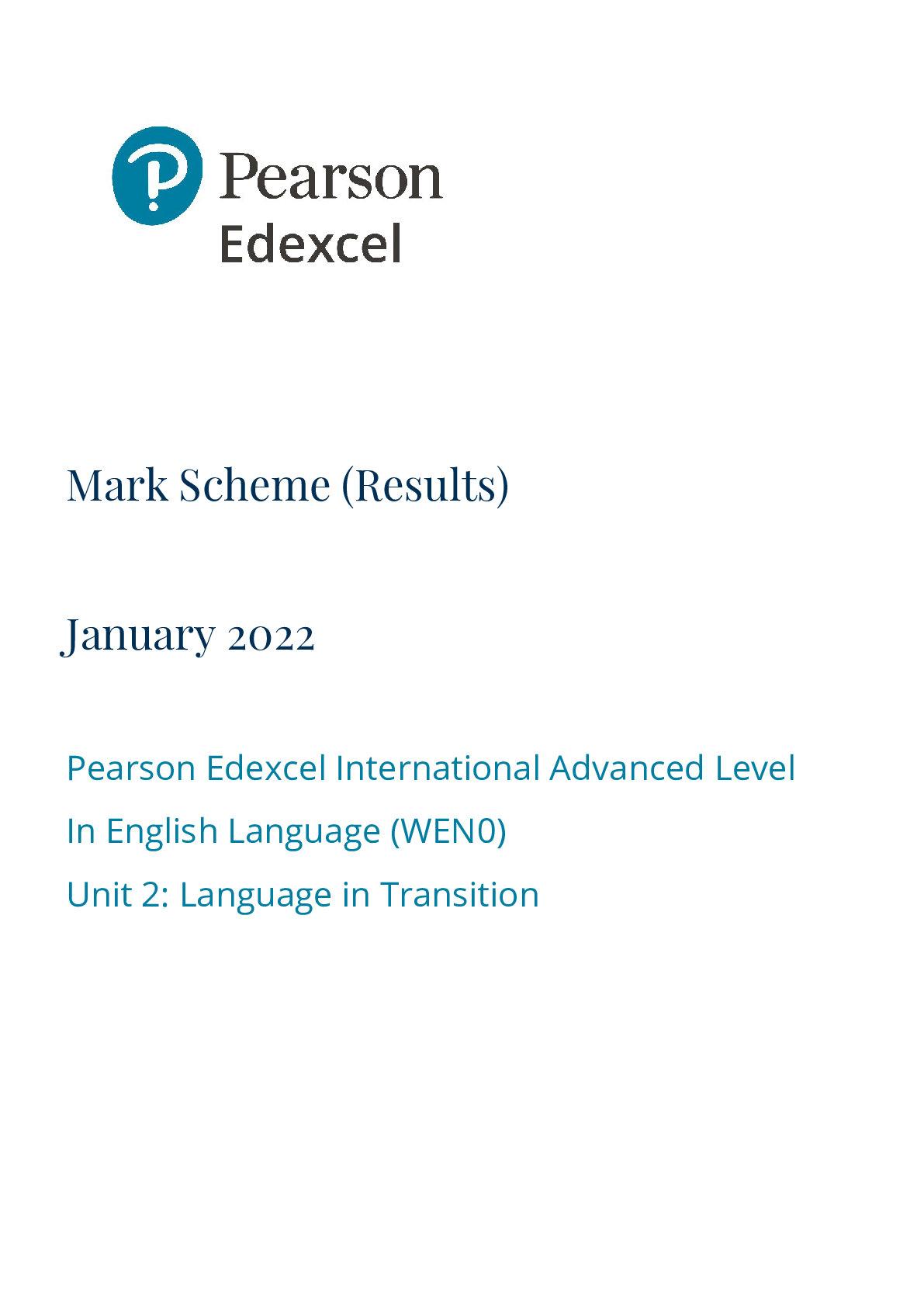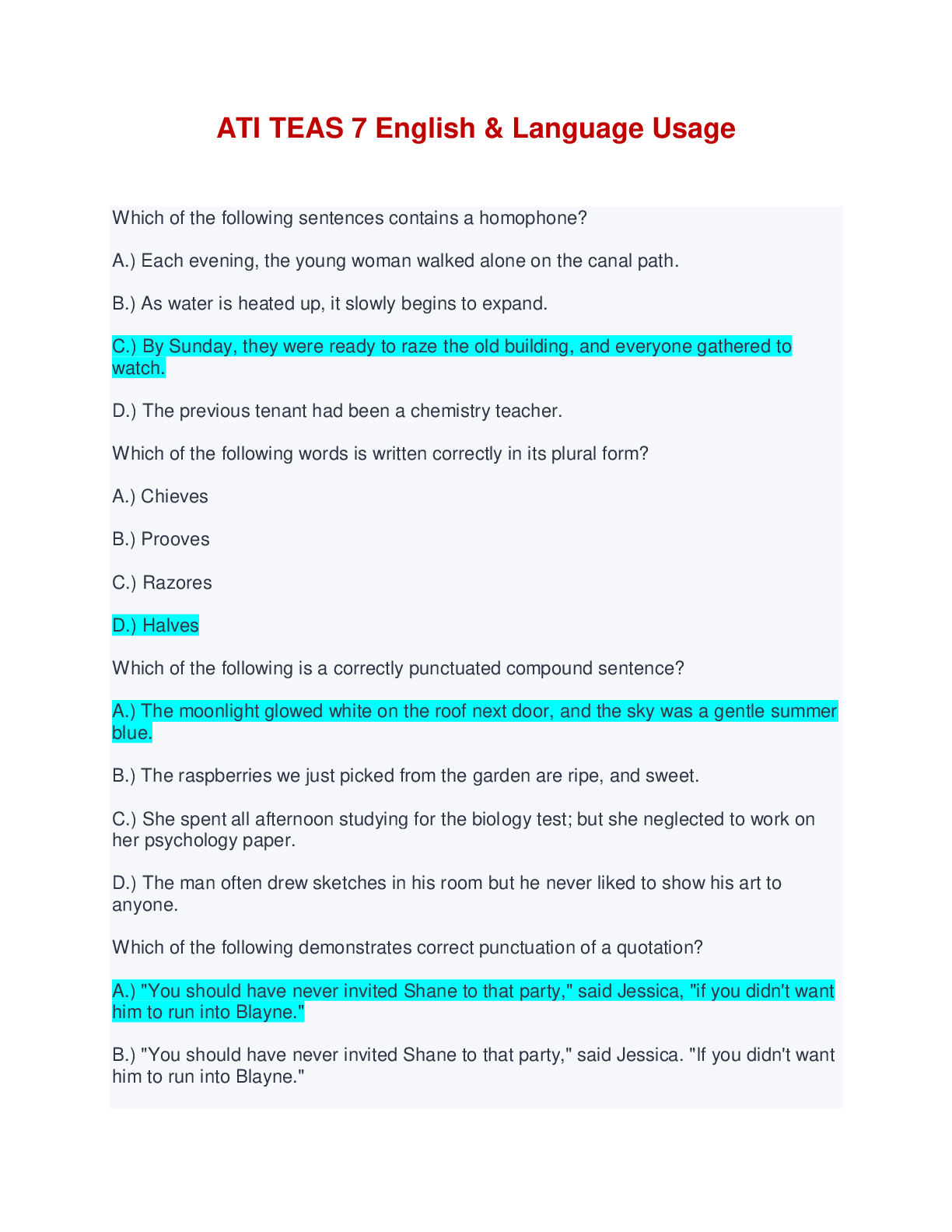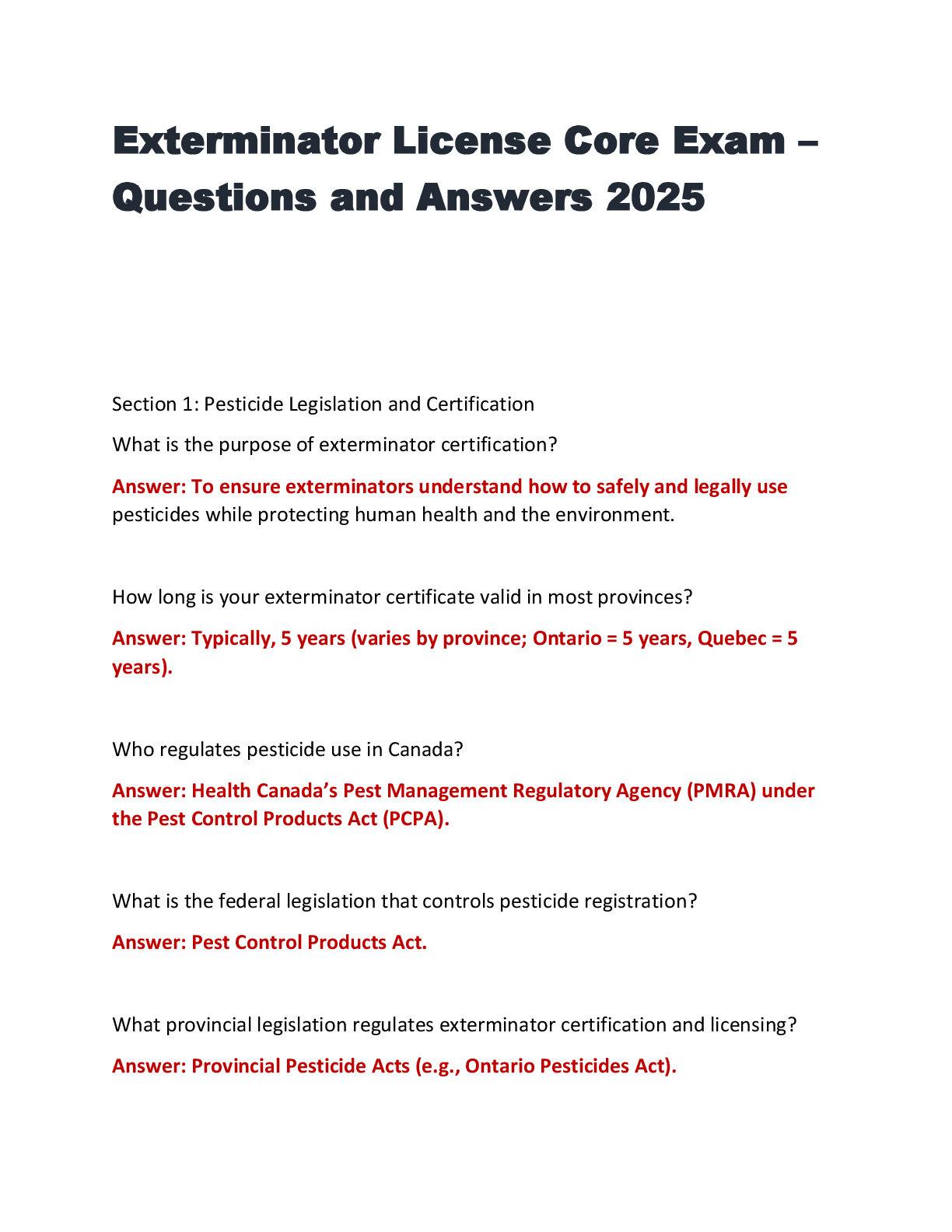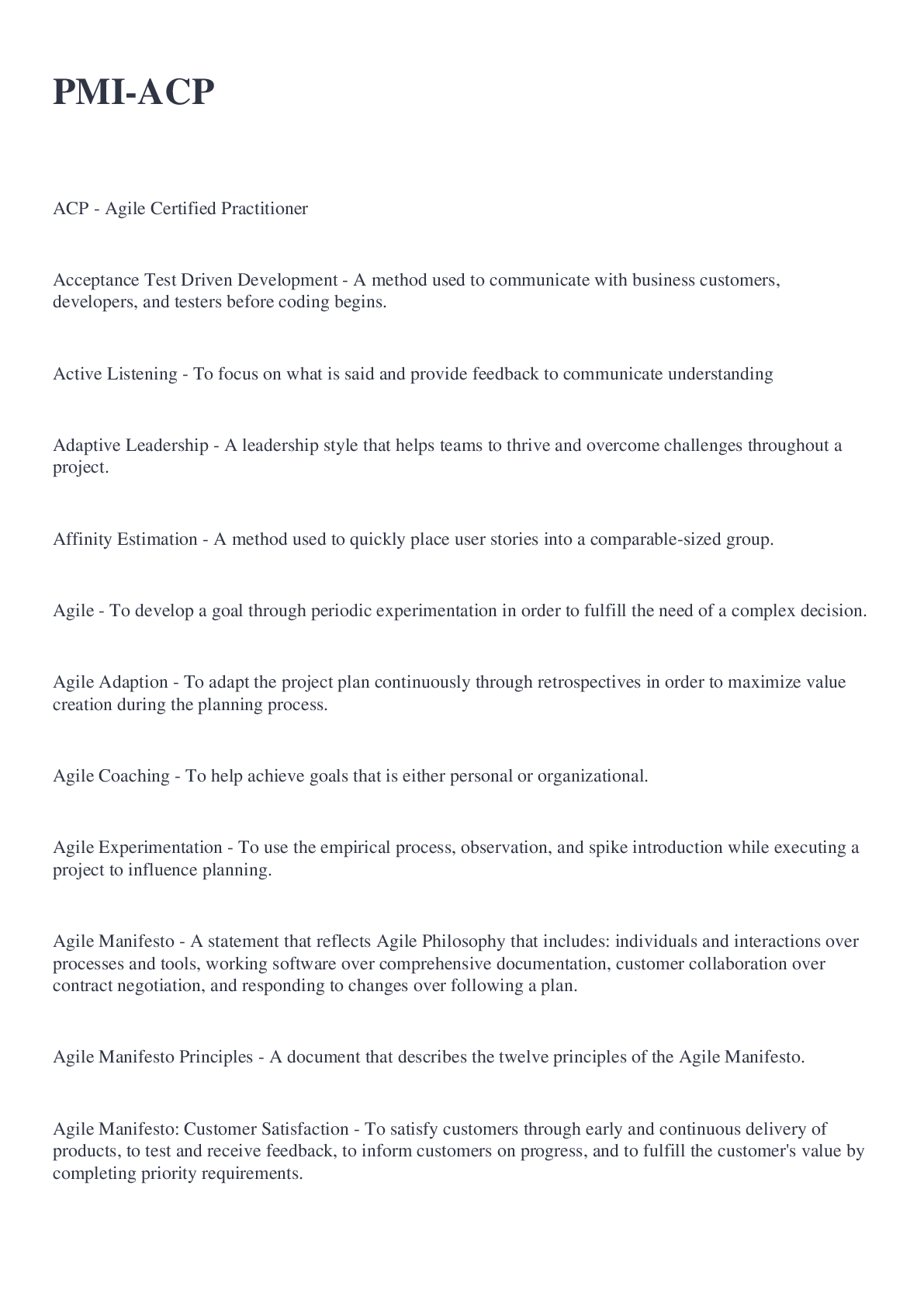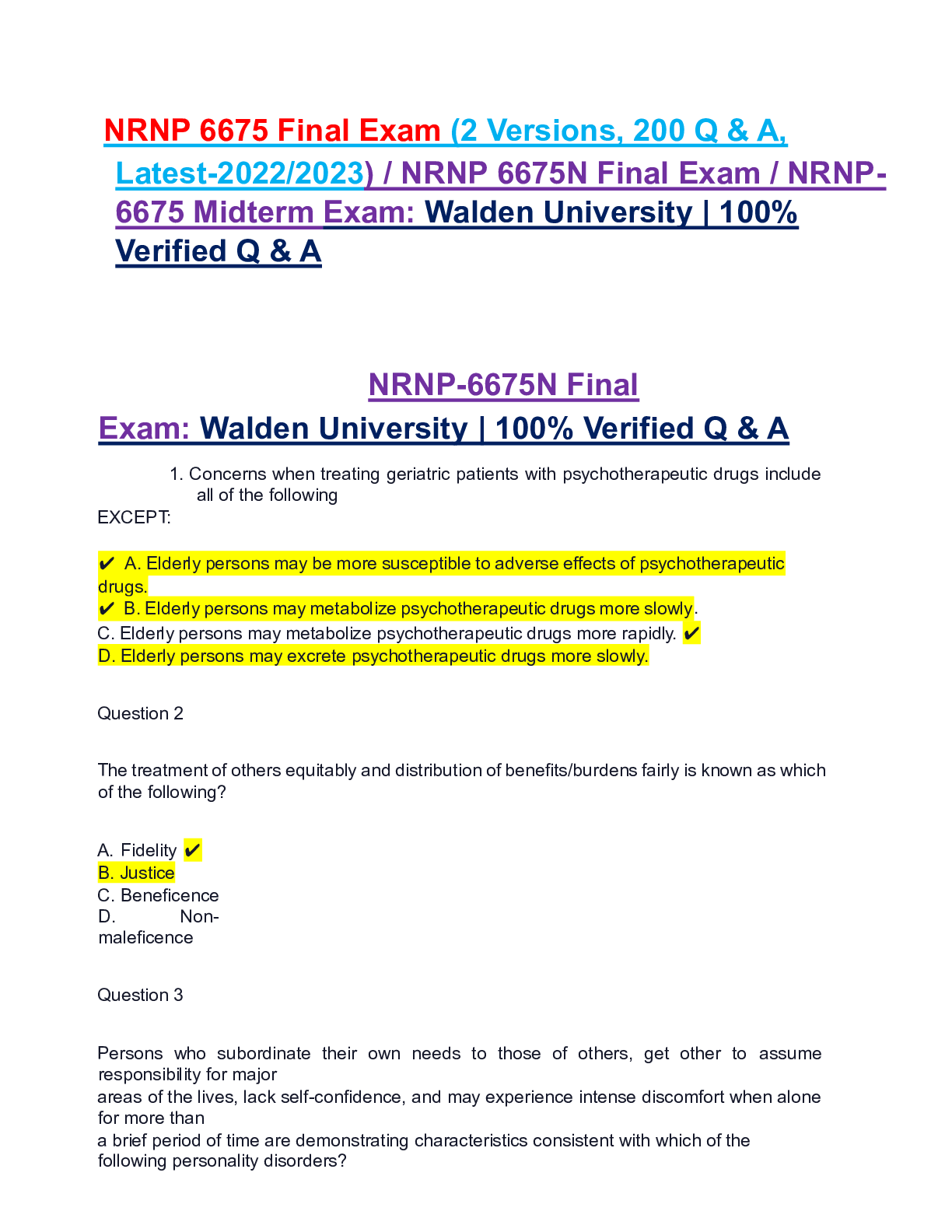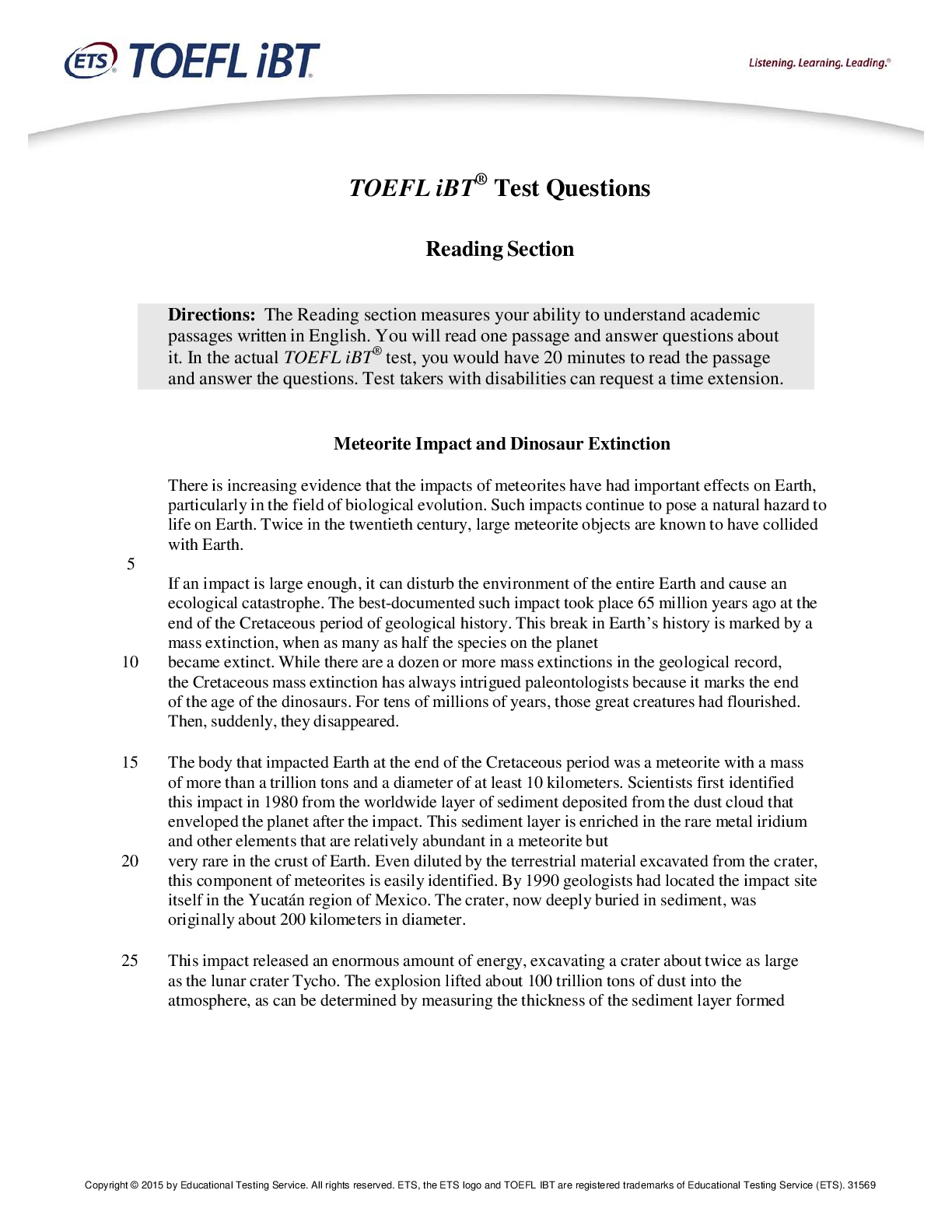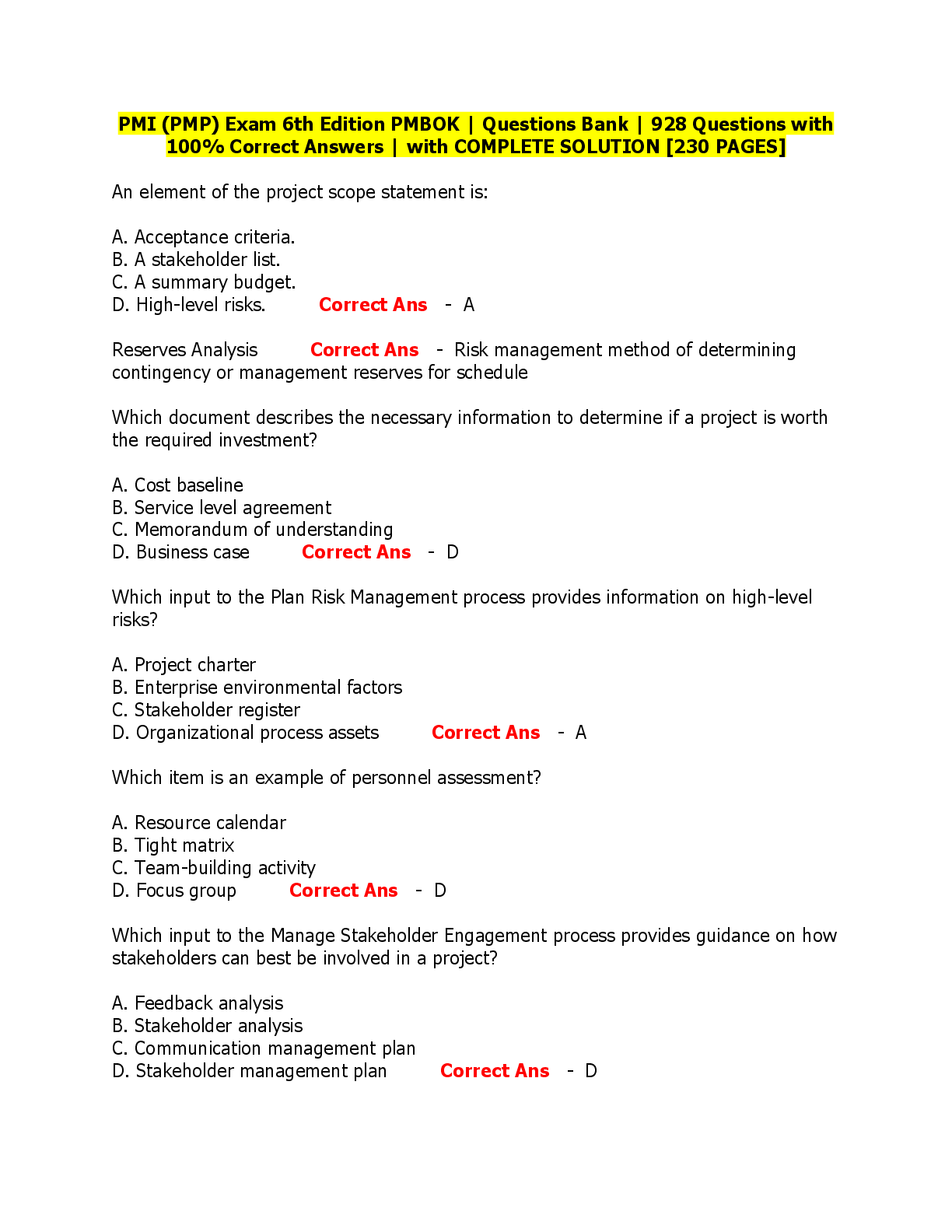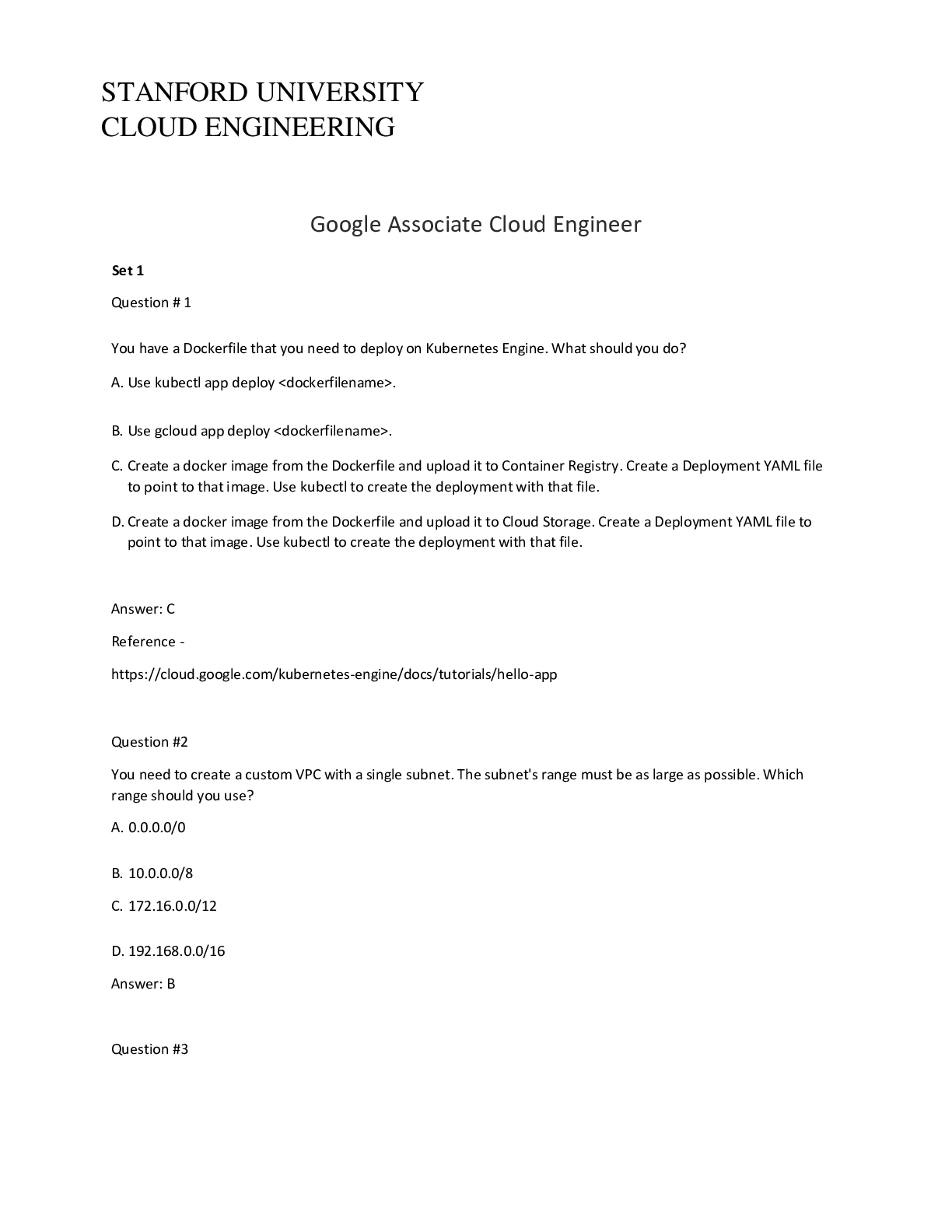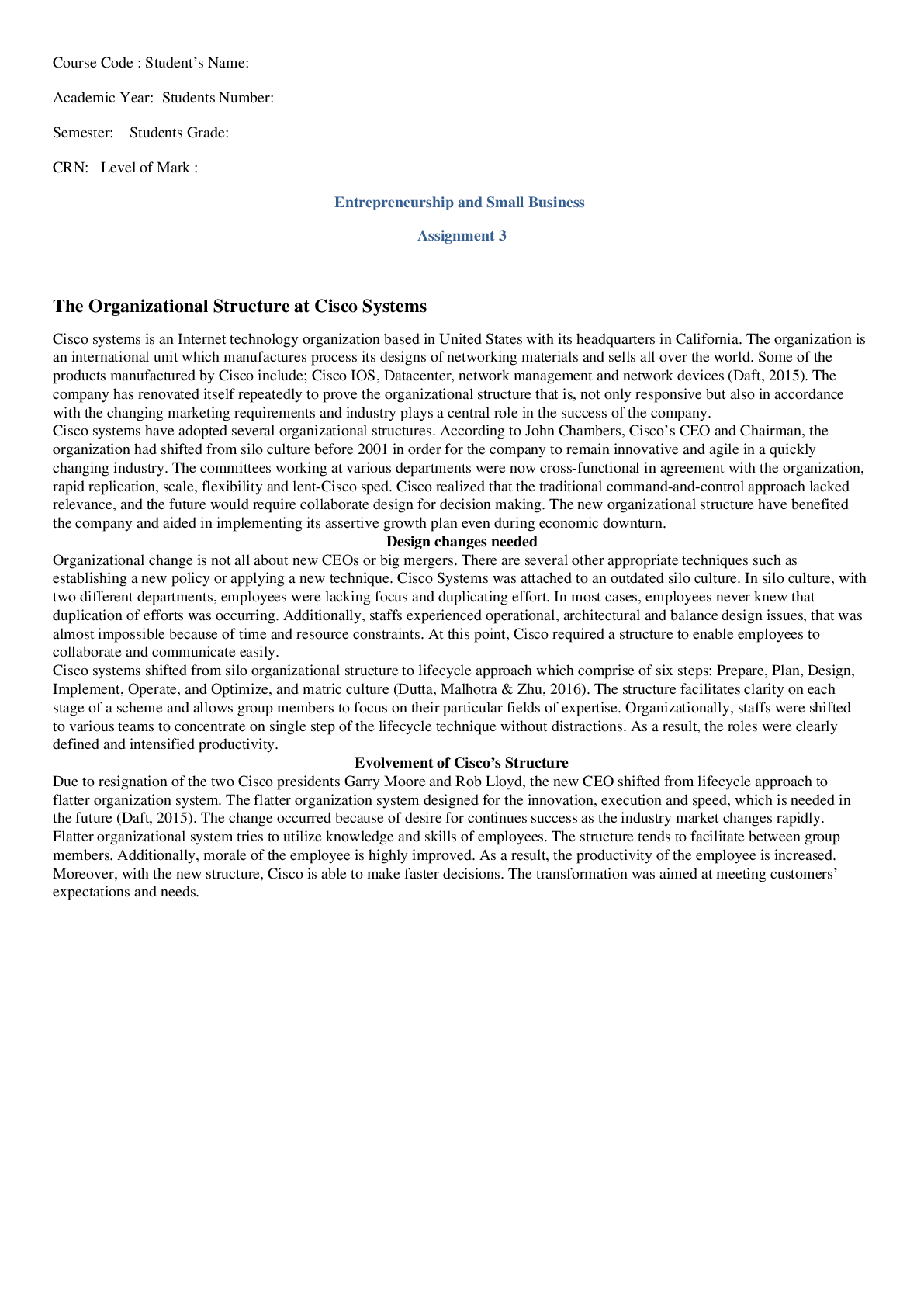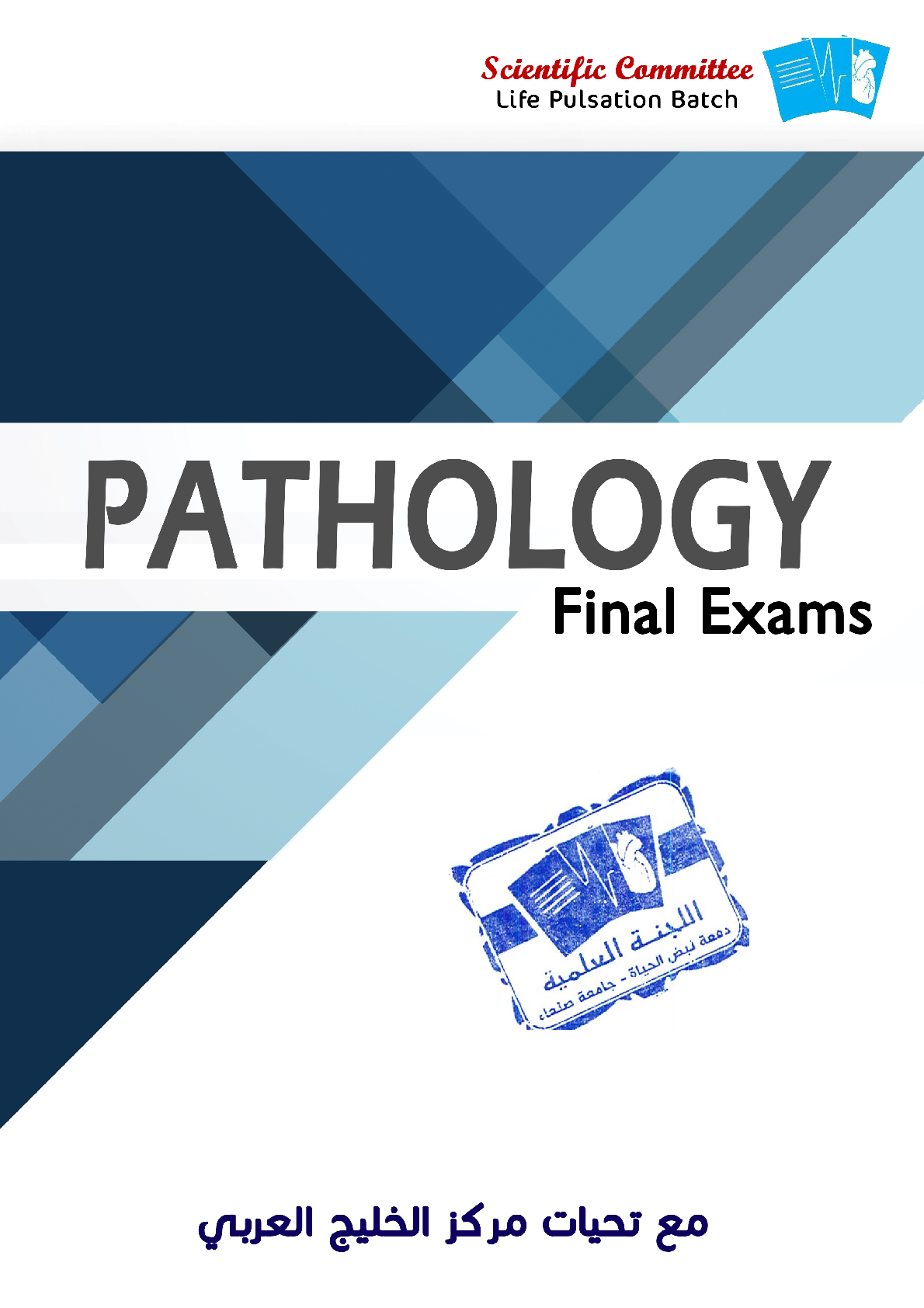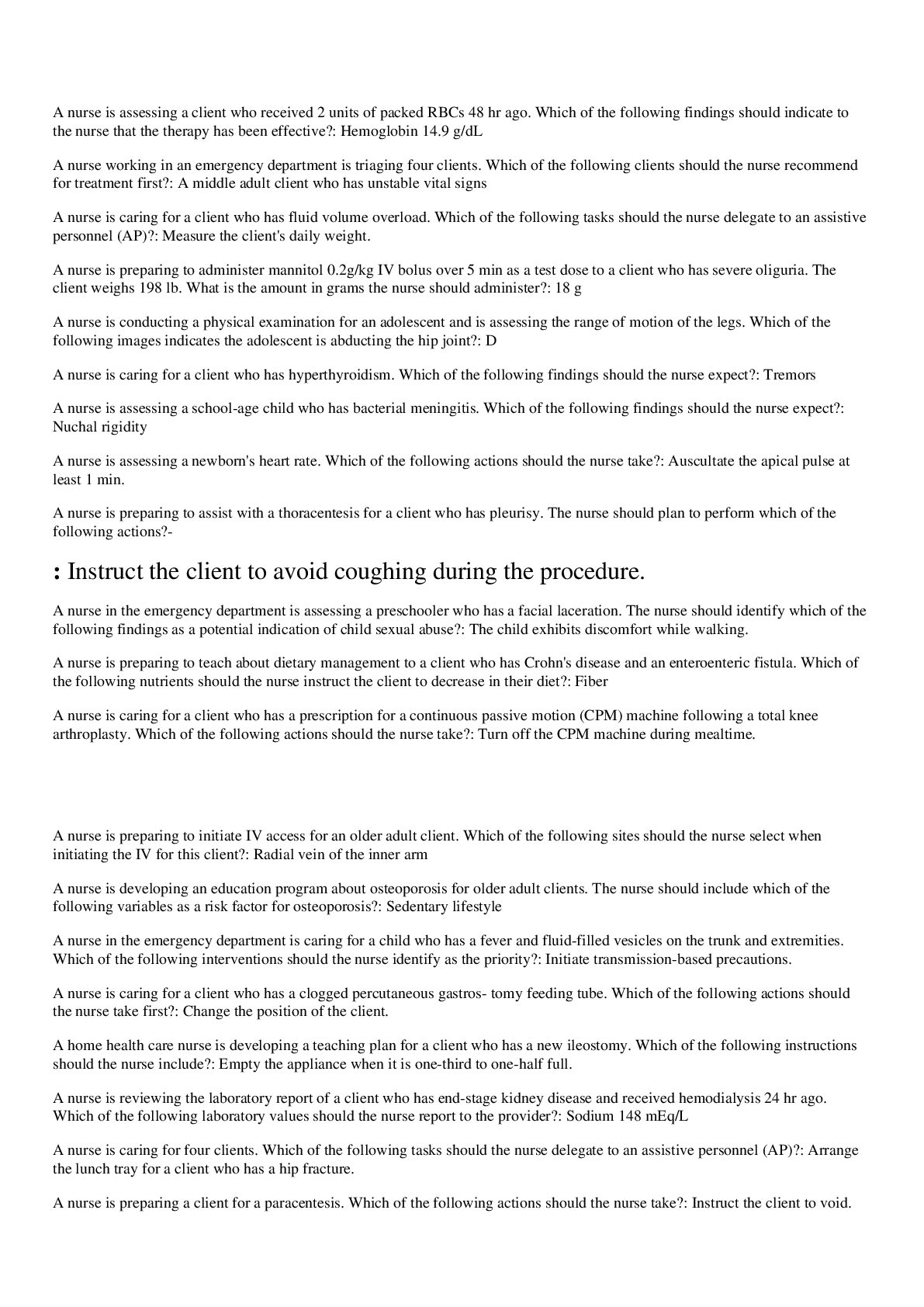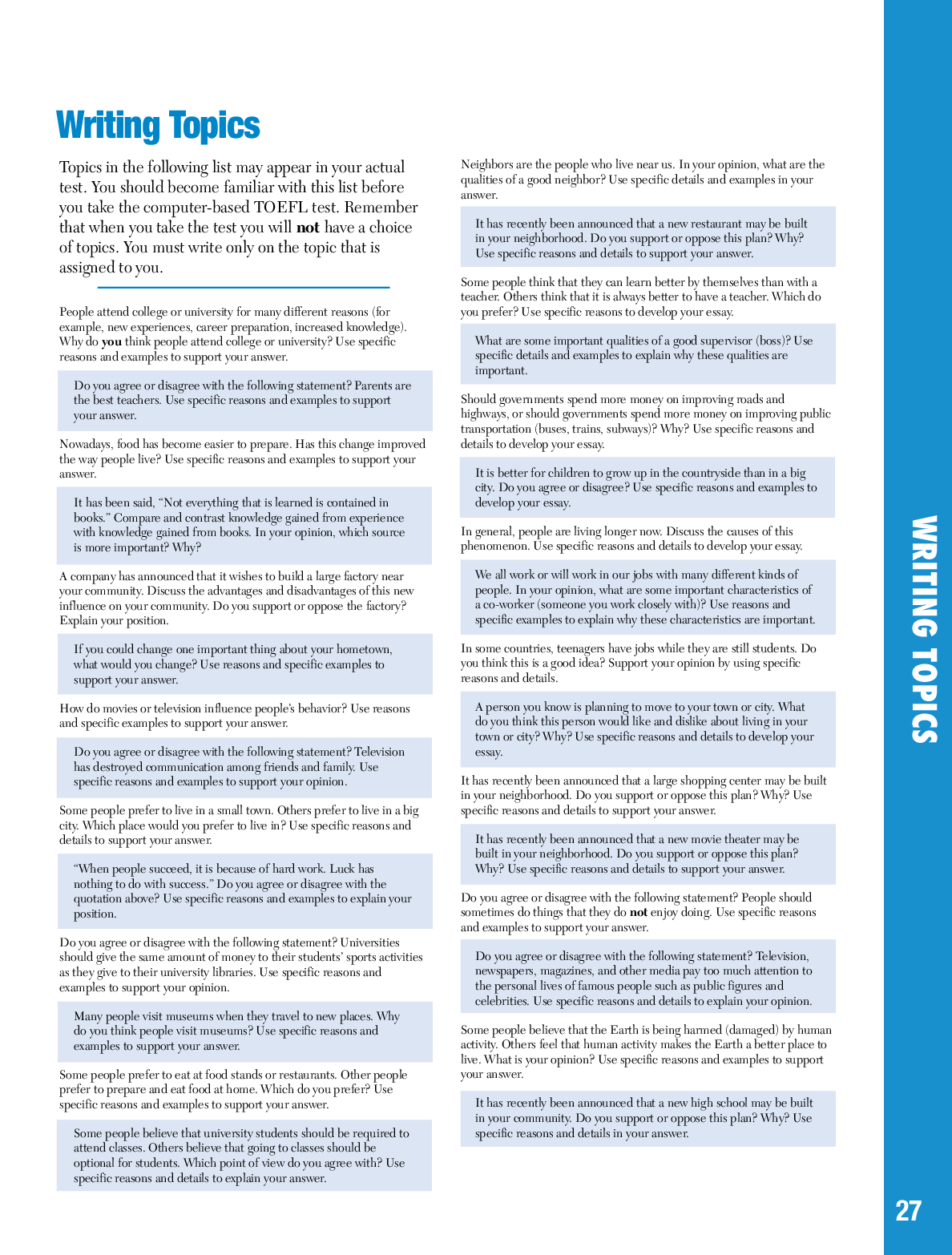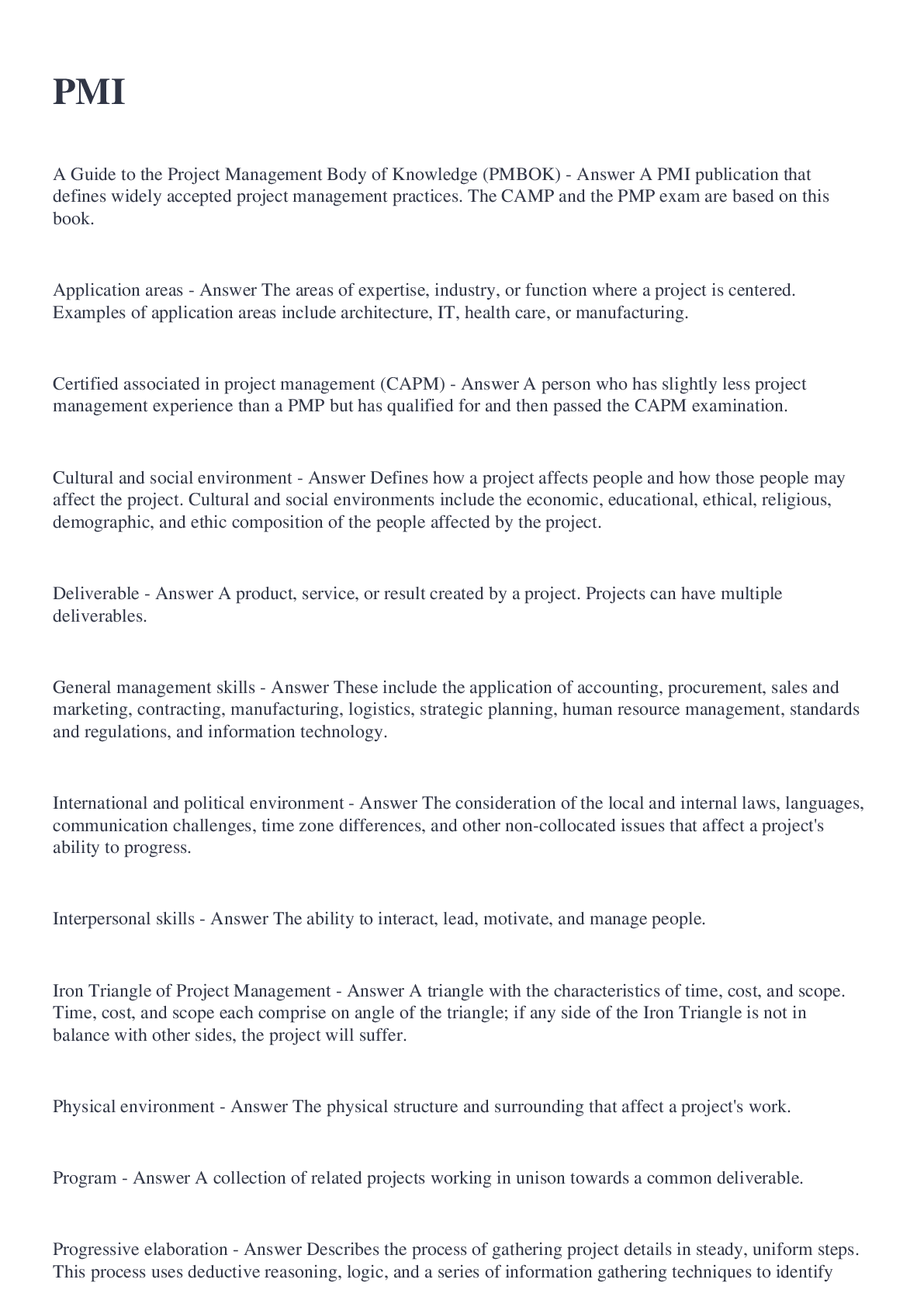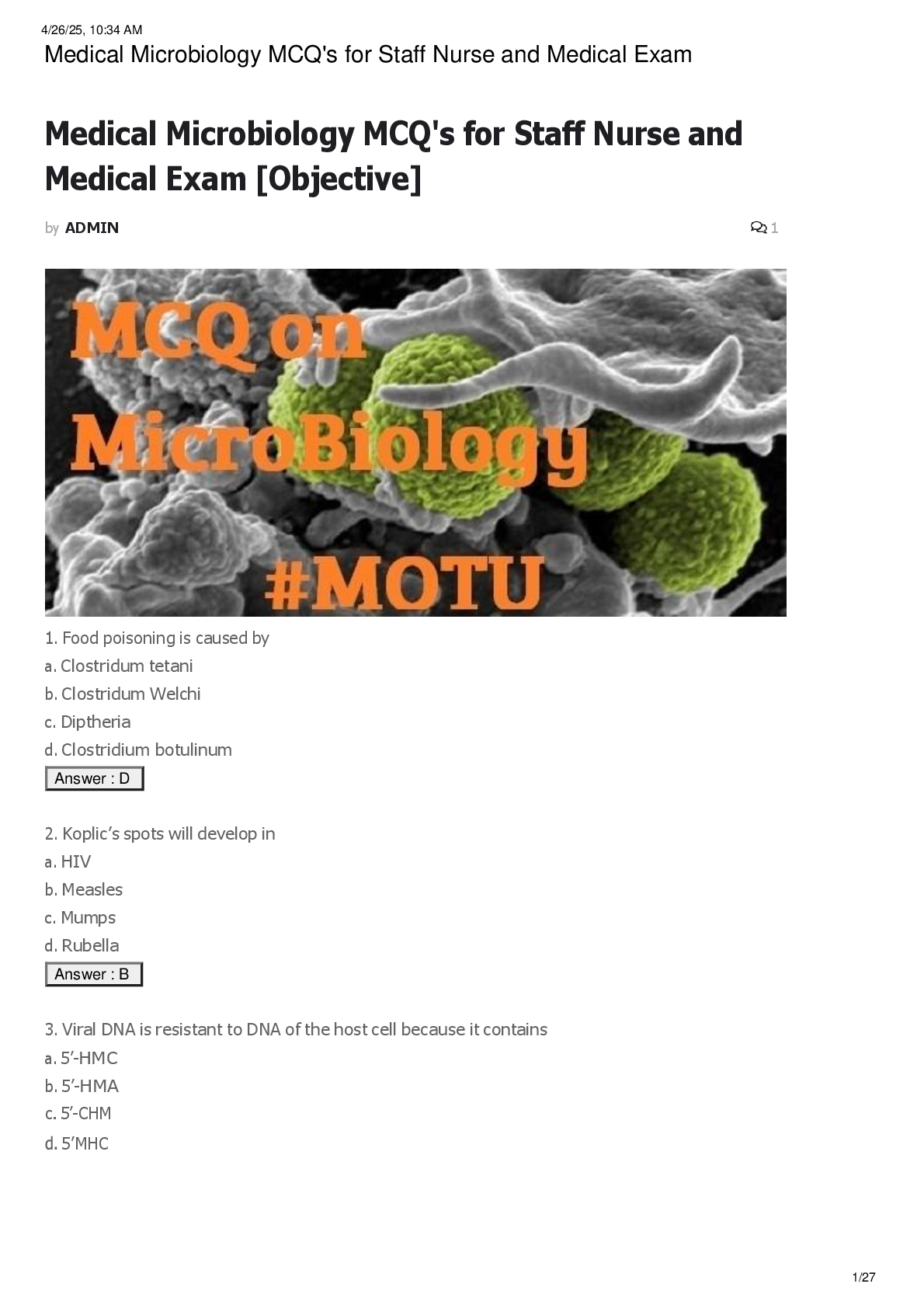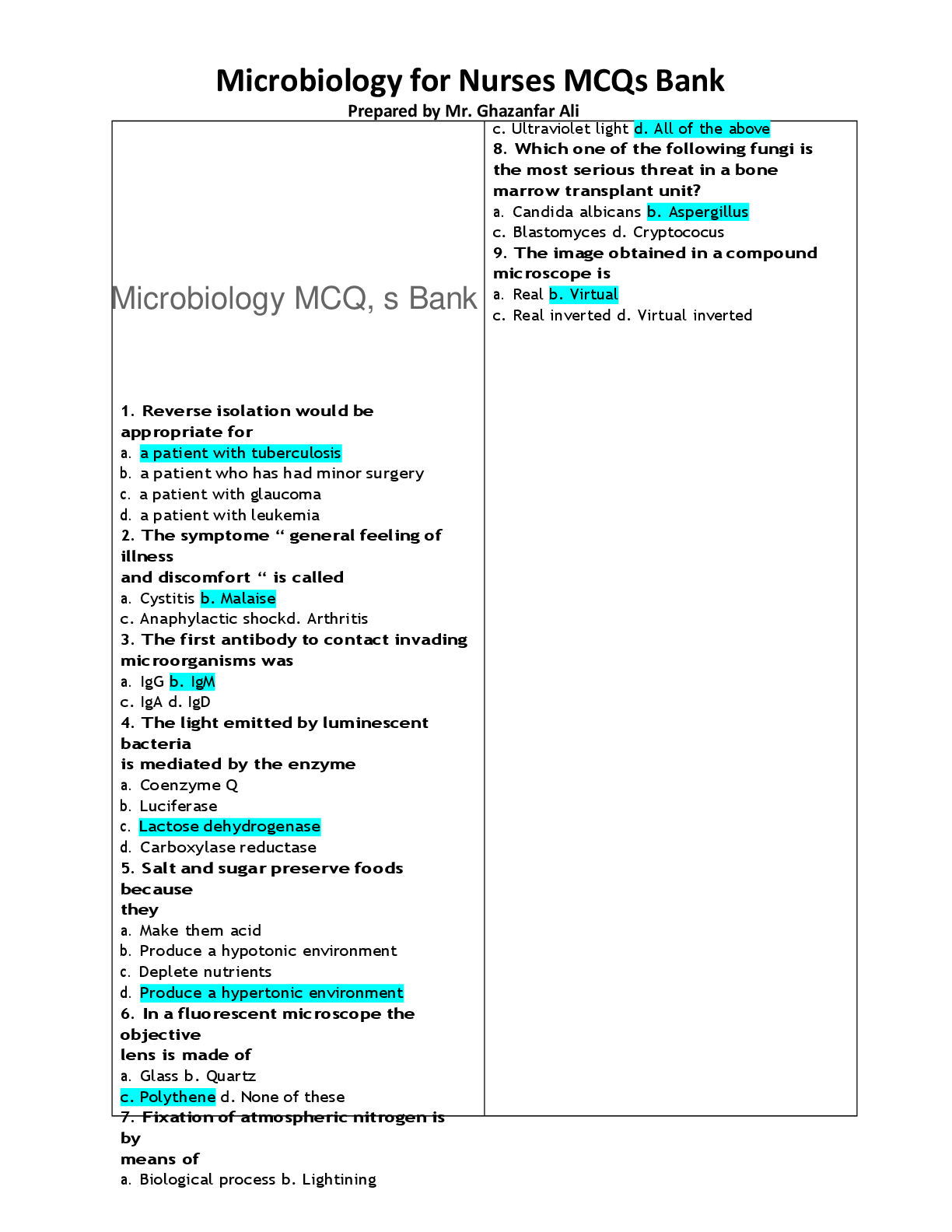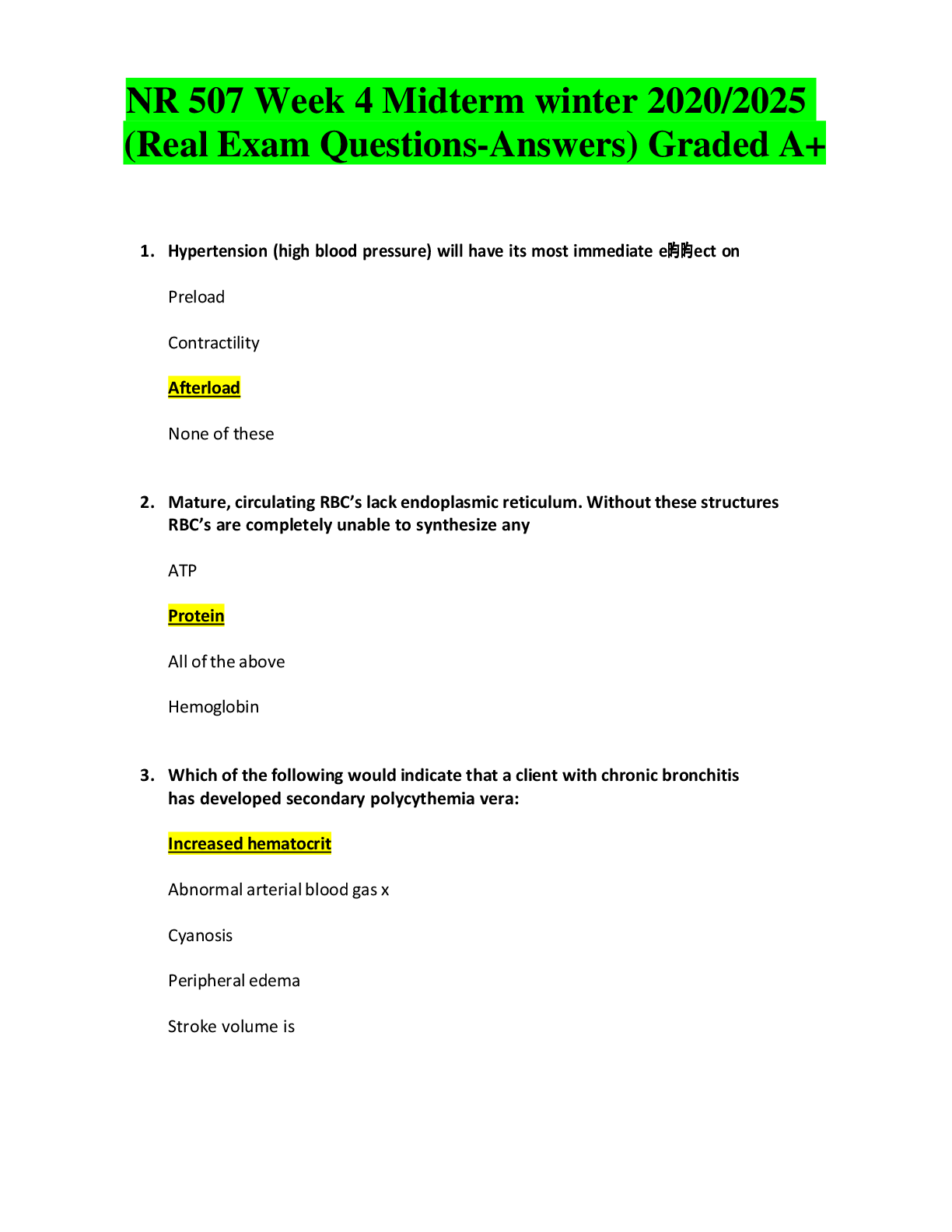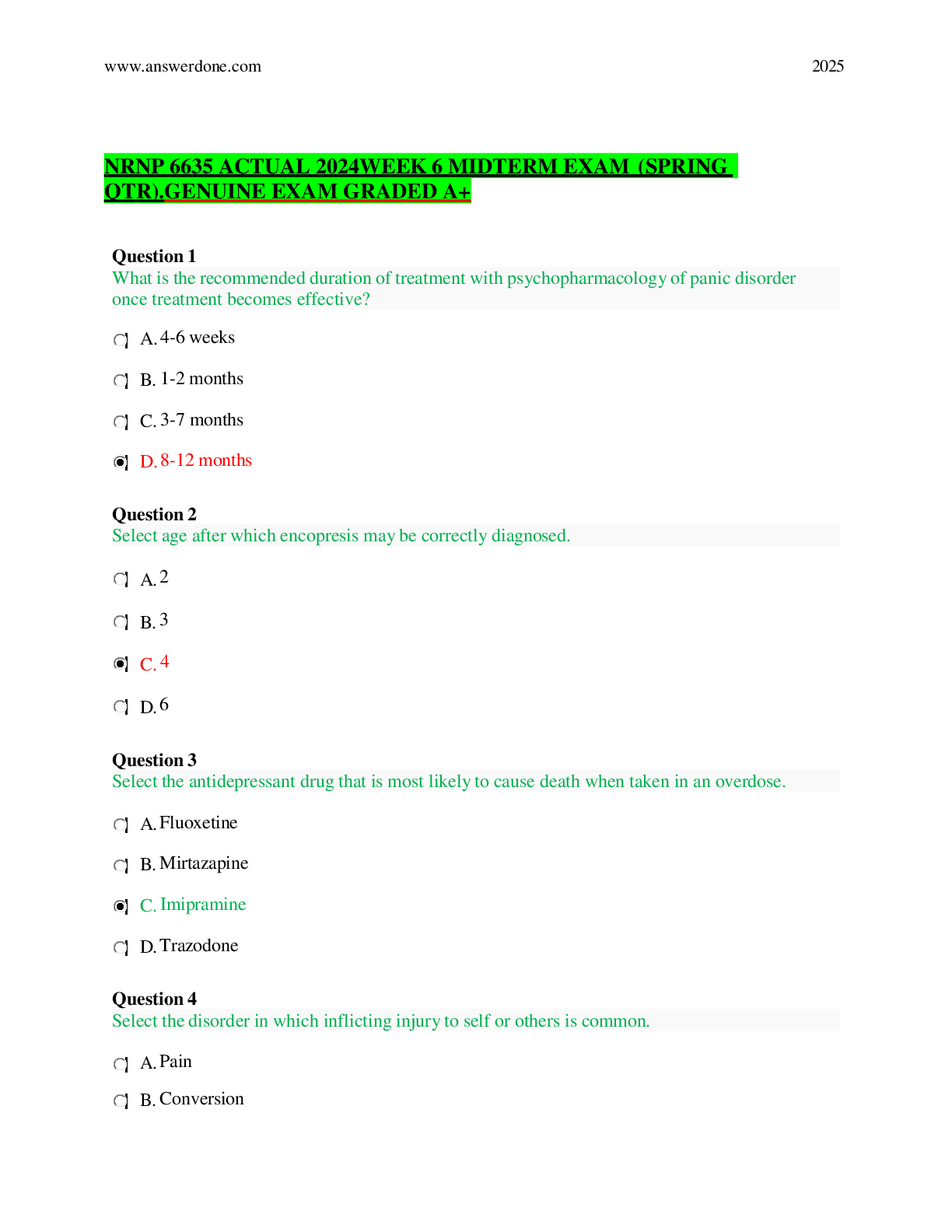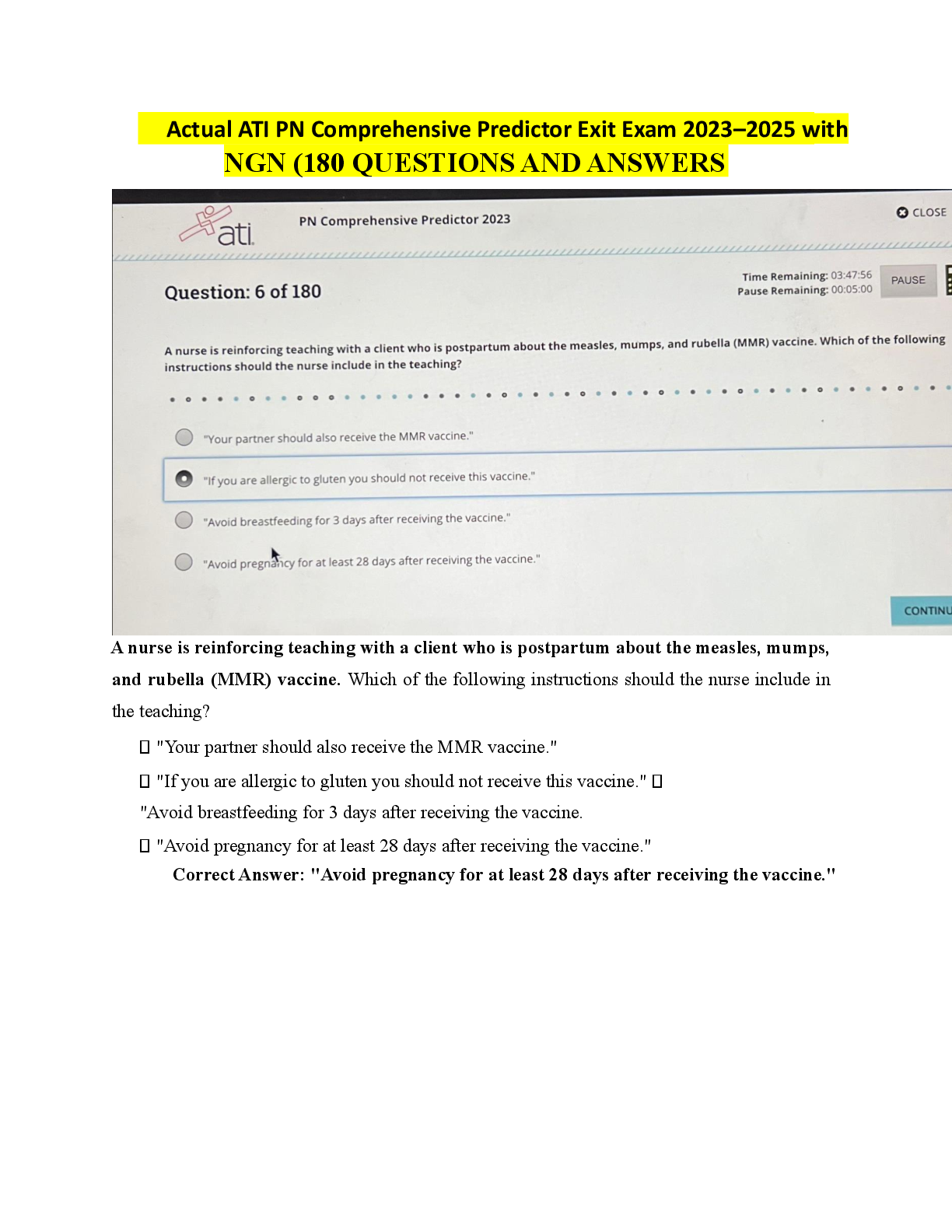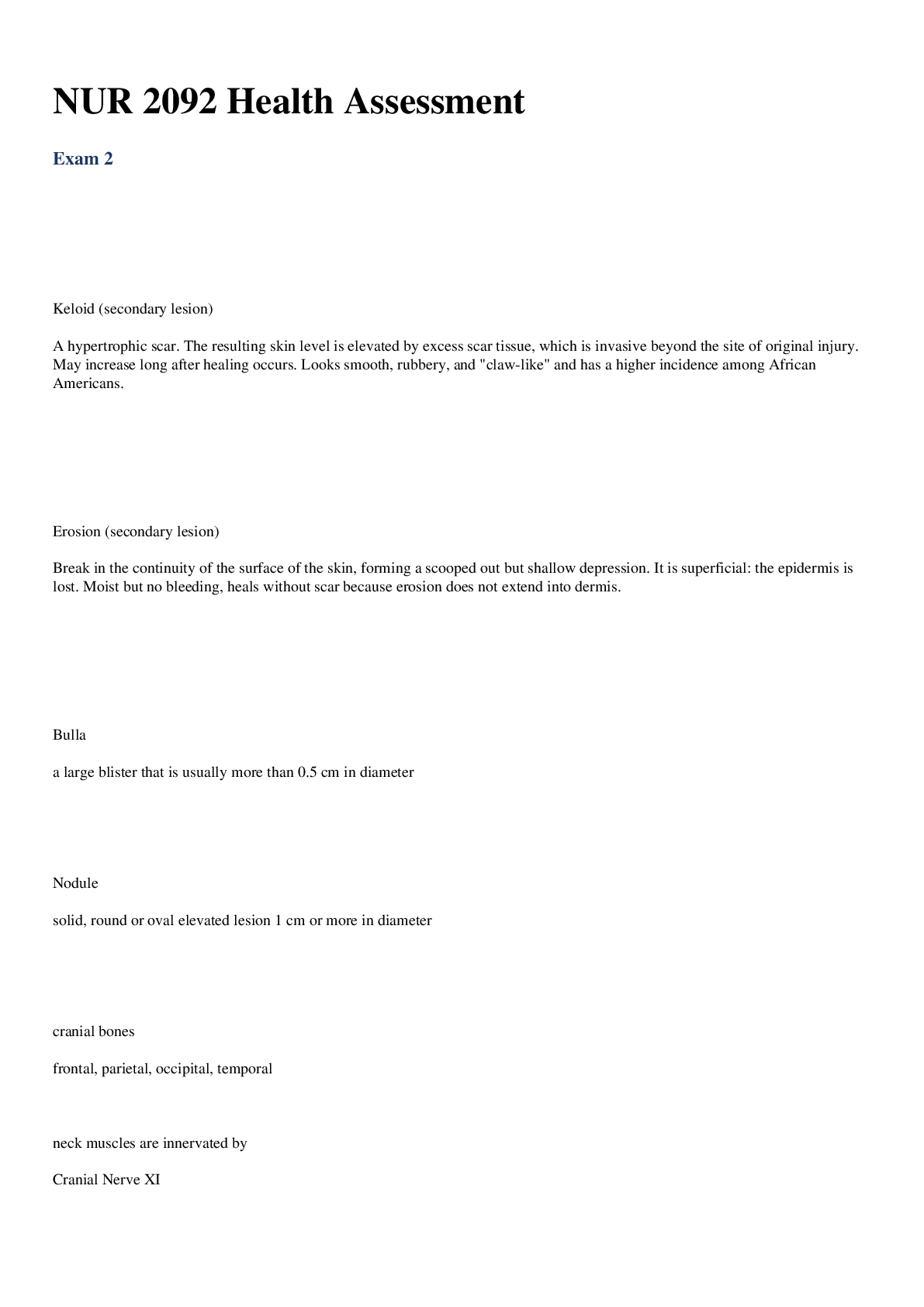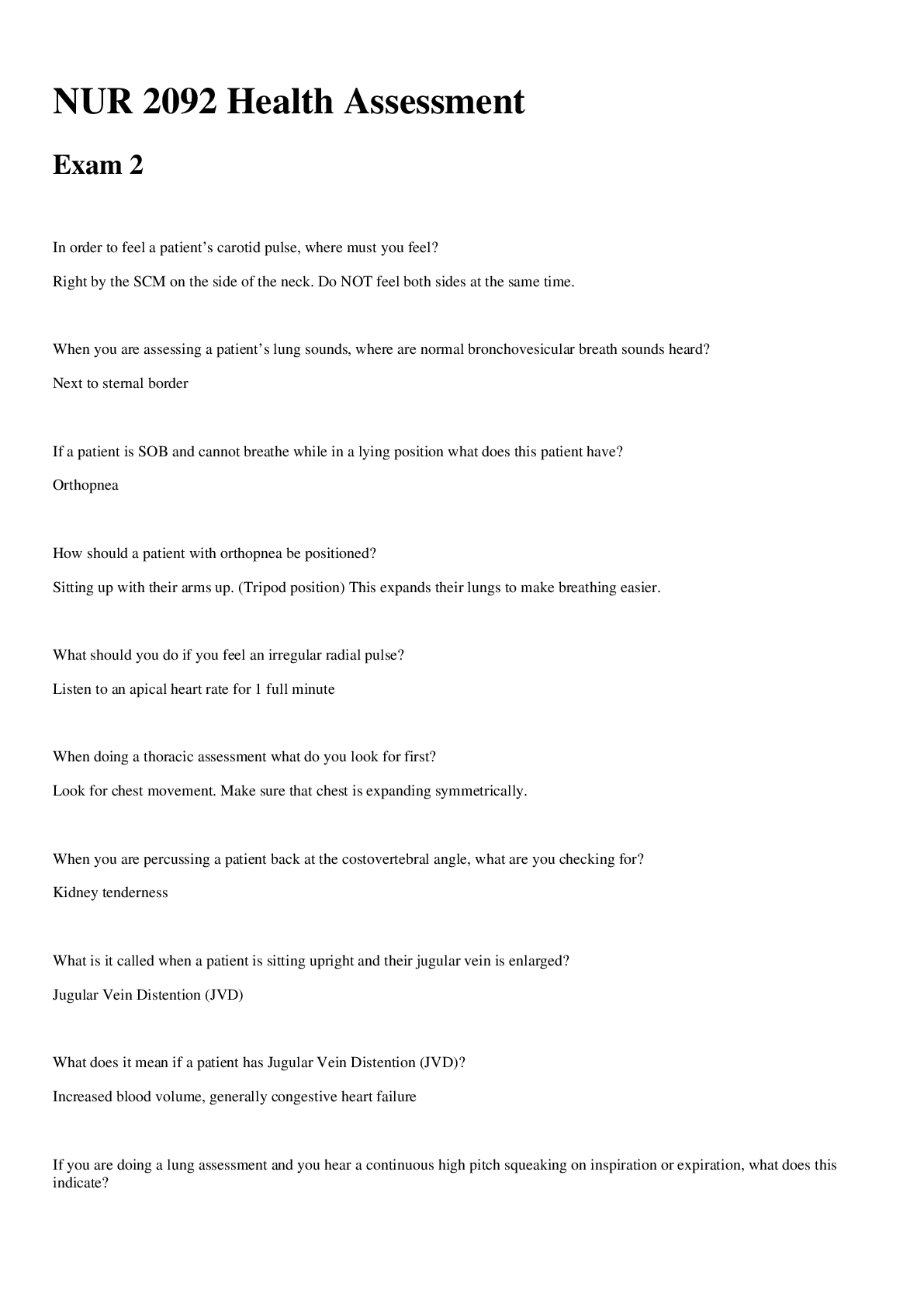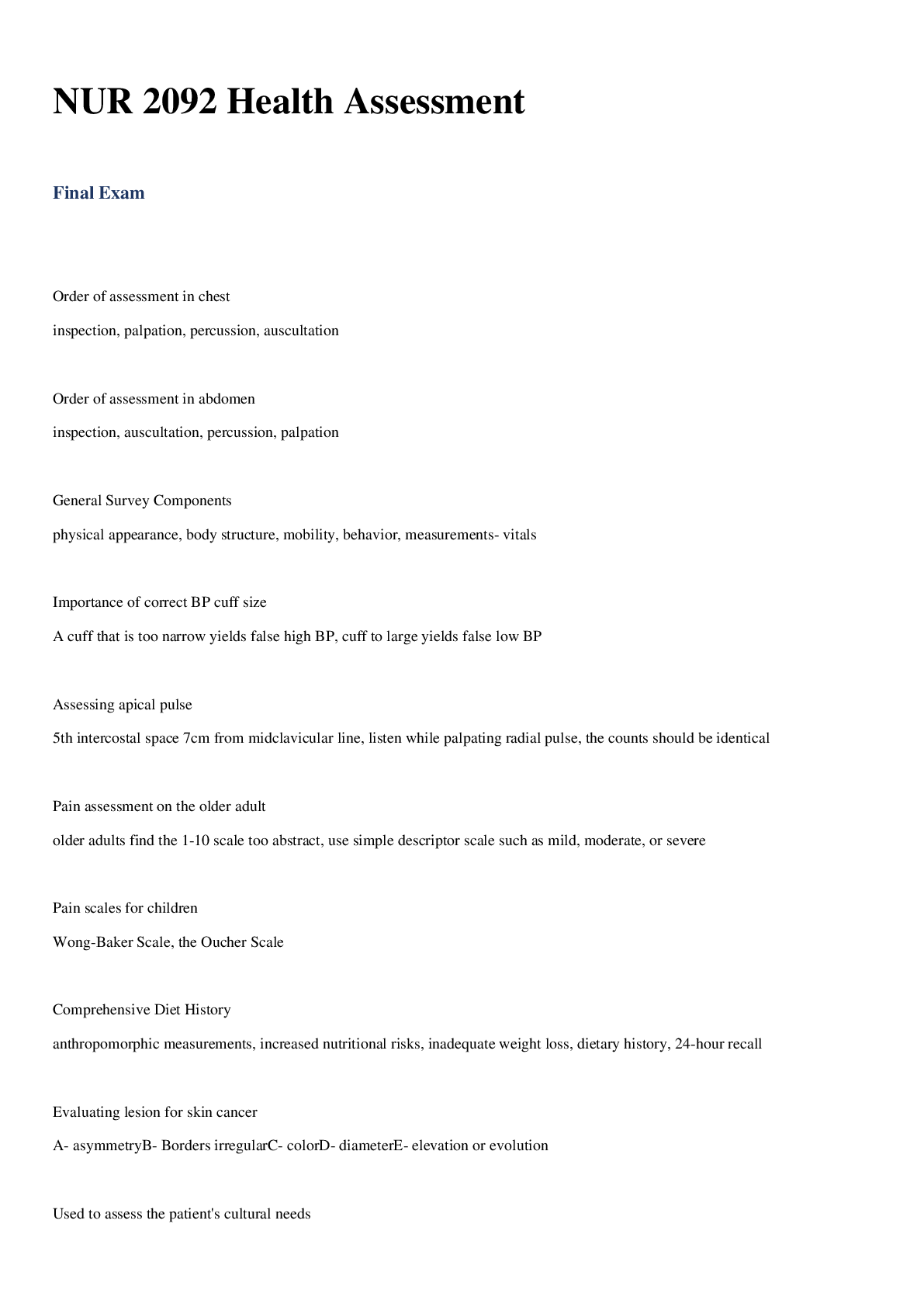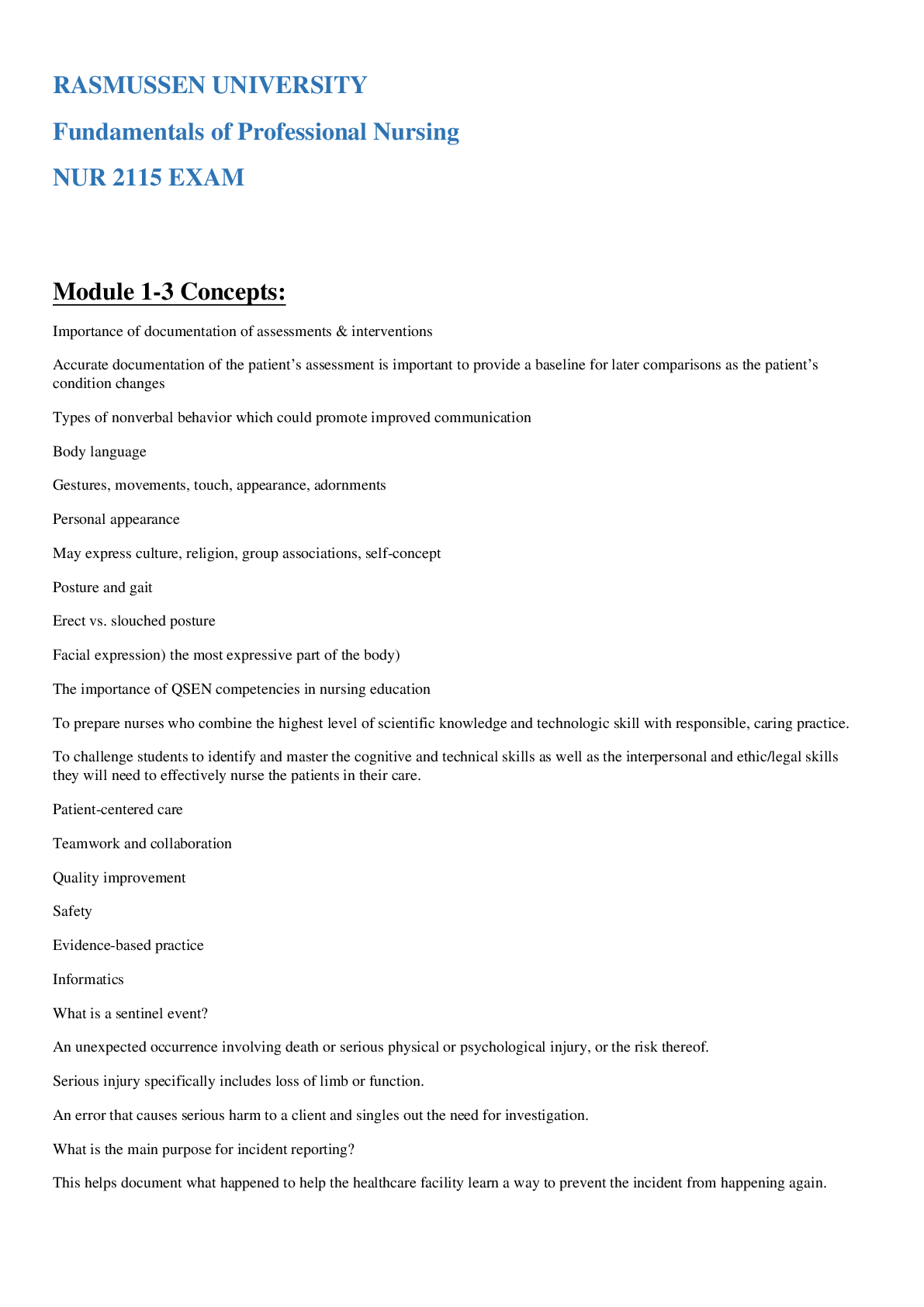PMI-ACP EXAM WITH ANSWERS 2024 UPDATE
Document Content and Description Below
ACP - Agile Certified Practitioner
Acceptance Test Driven Development - A method used to communicate with business customers, developers, and testers before coding begins.
Active Listening - To
...
focus on what is said and provide feedback to communicate understanding
Adaptive Leadership - A leadership style that helps teams to thrive and overcome challenges throughout a project.
Affinity Estimation - A method used to quickly place user stories into a comparable-sized group.
Agile - To develop a goal through periodic experimentation in order to fulfill the need of a complex decision.
Agile Adaption - To adapt the project plan continuously through retrospectives in order to maximize value creation during the planning process.
Agile Coaching - To help achieve goals that is either personal or organizational.
Agile Experimentation - To use the empirical process, observation, and spike introduction while executing a project to influence planning.
Agile Manifesto - A statement that reflects Agile Philosophy that includes: individuals and interactions over processes and tools, working software over comprehensive documentation, customer collaboration over contract negotiation, and responding to changes over following a plan.
Agile Manifesto Principles - A document that describes the twelve principles of the Agile Manifesto.
Agile Manifesto: Customer Satisfaction - To satisfy customers through early and continuous delivery of products, to test and receive feedback, to inform customers on progress, and to fulfill the customer's value by completing priority requirements.
Agile Manifesto: Welcome Changes - To allow quick responses to changes in the external environment, and late in development to maximize the customer's competitive advantage.
Agile Manifesto: Frequent Delivery - To deliver software frequently to the customer, allowing for a quicker product release, faster provision of value to the customer and shorter delivery timeframe.
Agile Manifesto: Collocated Team - To have individuals work together daily on a project to implement osmotic communication, focus, and receive instant feedback to achieve a common goal.
Agile Manifesto: Motivated Individuals - To give individuals the empowerment, environment, support, and trust needed to complete a task successfully.
Agile Manifesto: Face-to-Face Conversation - The most efficient and effective way to communicate in order to receive direct feedback and influence osmotic communication.
Agile Manifesto: Working Software - Working software enables the measurement of progress, enhance customer satisfaction, and maintain and improve the quality of the software to help support project goals.
Agile Manifesto: Constant Pace - To help team members establish a healthy work-life balance, remain productive, and respond to changes swiftly for progress during a project.
Agile Manifesto: Continuous Attention - To enhance agility and time spent on work requirements in order to retain a well-balanced work environment.
Agile Manifesto: Simplicity - Allows team members to focus on what is necessary to achieve the requirements needed to create and deliver value to the project and customer.
Agile Manifesto: Self-Organization - A team that knows how to complete tasks effectively, has dedication to the project, and is expert on the process and project.
Agile Manifesto: Regular Reflection - This allows a team to learn how to become more effective, what changes need immediate implementation, and behavior that needs adjustment.
Agile Mentoring - To pass on and teach based on experience, knowledge, and skills to other individuals in the team or that work for the organization.
Agile Methodologies - A way to complete a goal effectively and efficiently. Examples of Agile Methodologies include XP, Scrum, and Lean.
Agile Modeling - A workflow depiction of a process or system a team can review before it is turned into code. Stakeholders should understand the model.
Agile Planning - The most important aspect of the Agile project. Planning happens at multiple levels such as strategic, release, iteration, and daily. Planning must happen up-front and can change throughout the project.
Agile Practices - To make use of the Agile principles through activities.
Agile Projects - A project that occurs based on the Agile Manifesto and Agile Principles.
Agile Smells - Symptoms of problems that affect Agile teams and projects.
Agile Space - A space that allows team members to establish collaboration, communication, transparency, and visibility.
Agile Themes - Themes used to help the team focus on the functions of iteration.
Agile Tooling - To increase team morale with software or artifacts.
Analysis - To develop possible solutions by studying the problem and its underlying need and to understand the information provided.
Approved Iterations - After the deadline of iteration is reached, the team and stakeholders conduct a meeting for approval. Stakeholders approve the iteration if the backlog used supports the product increment.
Architectural Spikes - Spikes that relate to any area of a system, technology, or application domain that is unknown.
[Show More]
Last updated: 1 year ago
Preview 1 out of 19 pages
